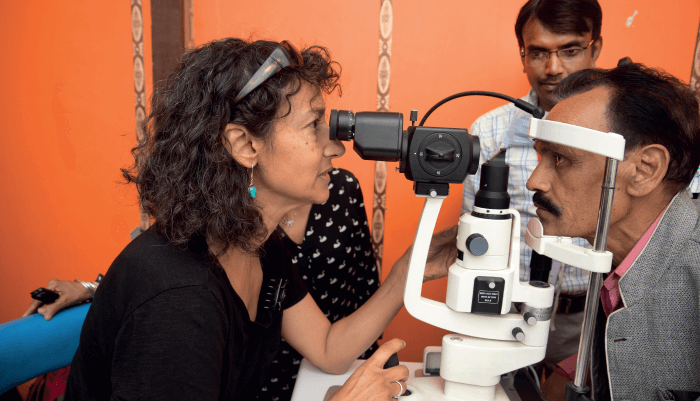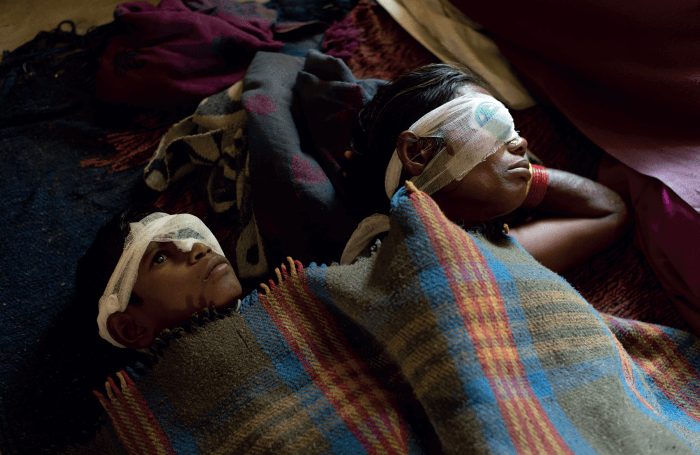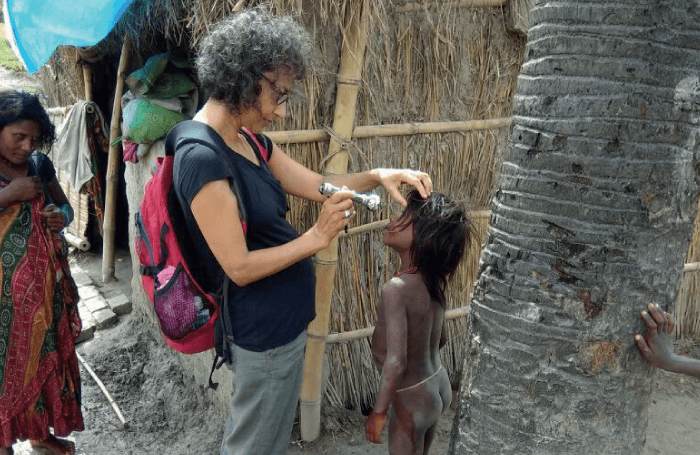
It was a tiny advert in The Guardian newspaper for a “trainee journalist for Surrey and South London Newspapers,” implying that ownership of a car might be useful for news-gathering in a rural area. I didn’t actually have a car, but the idea of gadding about the countryside chasing down stories was immediately appealing.
In some ways, I think I was born to be a journalist – I have an insatiable curiosity about everyone and everything. And the written word is very important to me. Television reporting came my way rather than my seeking it, and I discovered that I had a good eye for pictures that tell the tale.
I became the BBC’s first female Asian reporter in 1976 when I joined John Craven’s Newsround, but during a TV assignment in Afghanistan in 1988, I had a Damascene moment. I was interviewing a doctor who complained about the paucity of medicines hampering his ability to carry out vital work, when I realized that our documentary would do nothing to help his situation. I decided then and there that I would retrain to become a doctor – so I could try at least to make a real difference.
This time, it was a “light bulb” moment in the literal sense – when I looked down an ophthalmoscope as a medical student and marveled at being able to see the optic disc in magnified splendor. Ophthalmology also seemed to create relatively happy doctors, and there is a nice mix of medicine and surgery.

In the year 2000, when the global campaign called “Vision 2020: The Right to Sight” was launched, “eradication of blindness” programs were given a high profile. And yet, existing sight charities working in India demonstrated a complete blind spot when it came to the root cause of the problem – the shortage of eye surgeons in the areas of greatest need. I traveled the breadth of rural north India and found eye hospital after eye hospital built and equipped by wealthy sight charities, but unable to function effectively because of the lack of doctors.
We believed that a clinician-led sight charity – with a clinician-led modus operandi – was needed. And when we were invited to Bihar, the poorest and blindest state in India, we opted to concentrate on this area alone. Why? Because this was a big enough agenda and because it would allow us to build up detailed, hands-on knowledge both about frontline clinical work and the geography, people and culture of each region. A good journalist doesn’t write a report without field work and investigation; a good doctor wanting to get involved in humanitarian/aid work should follow exactly the same principle.
We began by providing the “missing” surgeons at hospitals with good infrastructure and in areas where cataract blindness was endemic. We also trained doctors on site – with the equipment and among the patients the teams would be dealing with every day.
With 19 years behind us, over 450,000 people have had their sight restored, and countless others prevented from going blind. All the surgery is now done by eye surgeons from Bihar itself, many of them returning to – or deciding to remain – in the areas in which they grew up.
Our partners are small- to medium-sized hospitals in every quadrant of Bihar. Together, we are drastically reducing the numbers of blind people and helping each hospital to become financially self-sufficient by March 31, 2021. Our clinical links will continue as long as clinicians in both countries find them of mutual benefit – and as long as patients benefit, too.
FAME stands for food, vitamin A, measles vaccination and education (on eye care and general health). Every day since February 2017, as part of this project, 300 malnourished children in Basman village have received a protein-rich meal that includes a sufficient level of vitamin A. Unfortunately, most ophthalmologists in India work in the big cities where they do not see these at-risk children. So they tend to deny that this needless cause of childhood blindness still exists. Every arm of our FAME protocol is essential if you truly want to eradicate vitamin A deficiency and the blindness it can cause in small children.
But the FAME project tackles just one of the many systemic challenges we have taken on in the state of Bihar. Blindness, poverty and gender inequality all walk hand-in-hand; set out to tackle one properly and you may tackle them all.

I answer this from an unusual perspective. I now run Second Sight full-time, so most of my ophthalmic experience is among patients and hospitals carrying out frontline medicine in the most deprived areas of India.
In comparison to ophthalmologists in developed countries, those working in the rural and small towns of India want to be able to provide truly comprehensive eye care – they are often the first and last point of contact for a villager with eye problems. Our approach to eradicating preventable blindness in these areas – to train ophthalmologists on site and as widely as we can – has brought great rewards for all. And that’s also true for ophthalmic assistants – very young men and women who can screen for cataract-blind patients in the villages, refract, counsel patients, act as scrub nurses, and even give superb anesthetic blocks.
Meanwhile, back in the UK, I know that my former colleagues (many of whom also volunteer for Second Sight) are in a field in which super-specialism is the name of the game; narrowing down one’s field of ophthalmic work has been happening for years. A stark contrast to my experience working in Bihar.
Retaining my sense of humor – something I see as essential in our current world.
During the first year of Second Sight, I was given a book written by the journalist Graham Hancock. Lords of Poverty was a damning critique of big and wasteful projects carried out in the name of “Development,” which provided “jobs for the boys” and created a culture of dependency in poor countries. Hancock knew that, for the reign of the Lords of Poverty to end, we needed alternatives. He yearned for “local-level initiatives, relevant and realistic strategies, and the energy and enterprise of the poor to be allowed to flourish” – which could just as well be a summary of the Second Sight story in Bihar. I felt it was imperative to record this.
To pinch a quotation from my good friend and fellow ophthalmologist John Sandford Smith: “Do what you feel is important to do, and the career will take care of itself.” I have followed this principle with all of my careers and throughout my life, and I suggest others do the same.
Mathen’s book, Outgrowing the Big, can be purchased from her website (www.secondsight.org.uk). Each book pays for pre-operative examination and treatment, cataract surgery, post-operative treatment, follow-up care, food, accommodation and transport to and from hospital for one blind patient.
